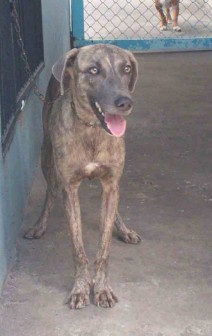Before we begin with this instalment of this heartworm drama, allow me to surprise you with some facts. Imagine, wonder of wonders, this, ‘The Pet Corner‘ column has now reached 270 articles on matters associated with the well-being of our pets. More than five full years have slid by without so much as a bark or a meow!
Actually, I feel pretty pleased about the longevity of a column such as this. And we have only touched the tip of the iceberg. We have not yet dealt in any great depth with pet nutrition, pet geriatrics, the issue of keeping jungle animals as pets, etc.

The column has generated some interest as reflected in the letters, photos, telephone calls and passing comments which we received weekly. We promise that once you continue to enthuse us with your responses, we will continue to write the column.
Now let’s address the therapy aspect of the heartworm problem.
Treatment
Let’s get one thing straight – heartworm in dogs (cats) can only be treated by your veterinarian. Obviously, this must be so. You remember that, over the last three weeks, I have been emphasizing the insidious nature of the ailment. It creeps up on the poor animal. Symptoms only show themselves when the heart and other organ systems cannot cope with the pressures on the normal function of the animal’s body. All the time, during the period between the acquisition of the infection and the exhibition of the symptoms, the animal is compensating. The heart, the function of which is being compromised by the worms therein, is pumping faster, because less blood volume (with every heart contraction) is being delivered to the organs. As the disease progresses, the organs become more and more starved of blood, and then they slowly begin to collapse.
The first step in the treatment of the heartworm will therefore be an evaluation of the dog’s physical condition. Only a veterinarian can competently do this. In all likelihood, this would mean stabilizing the heart failure and the liver and kidney insufficiencies. In other words, long before the actual, specific treatment begins, we have got to get the dog’s health status to a level which would allow him to cope with the treatment – and what a treatment it is!

At present, the drug of choice is an arsenic compound. Your veterinarian will be injecting arsenic into the dog’s muscle or vein. So we can see the potential danger in the administration of this therapy, if the dog’s health status has not been propped up sufficiently. Worse, if this injection of the arsenic salt has to go via the venous route, it has to be done four times in 36 hours (morning – evening – next morning – evening) If, for whatever reason, during the process of the injection, the needle slips out of the vein, or if some of the arsenic leaks out of the vein into the surrounding tissue, then a most ungodly swelling develops. The drug manufacturers have now come up with a newer and more easily administered method of injection. This method entails giving the dog two injections into very specific muscles in a 24-hour period.
Let’s take for granted that your competent veterinarian has carried out the therapy efficiently. The spaghetti-like worms in the heart are now all dead. The problems are over, you think. Not so! If the dog suddenly exerts itself too much and one of the dead worms disassociates itself from the bundle and gets into the blood stream (pulmonary circulation) and ends up as an embolus in the lung, the animal might just keel over – instantaneously – dead.
This means that after the heartworms have been killed, the animal must be kept quiet (no strenuous exercise, no sudden movements, no chasing of cats, no fighting with other dogs, etc). The dead heartworms will disintegrate and be absorbed slowly – over the period of about two months – by the body.
Having killed the adult heartworms the problem is still not over. Don’t forget that we still have the microfilaria (immature stages of the heartworm) in the circulating blood to deal with. They have to be killed too, so that they won’t grow into adults which can reproduce, and start the whole cycle over again.
How to kill the microfilariae and how to prevent and control the heartworm scourge is next week’s topic.
Please implement disease preventative measures (vaccinations, routine dewormings, monthly anti-heartworm medication, etc) and adopt-a-pet from the GSPCA’s Animal Clinic and Shelter at Robb Street and Orange Walk, if you have the wherewithal to care well for the animals. Do not stray your unwanted pets, take them to the GSPCA’s Clinic and Shelter instead. If you do not wish your pet to have puppies or kittens, you may exploit the GSPCA’s free spay and neutering programme. If you see anyone being cruel to an animal, or if you need any technical information, please get in touch with the Clinic and Shelter by calling 226-4237.





